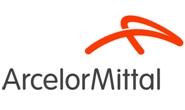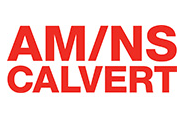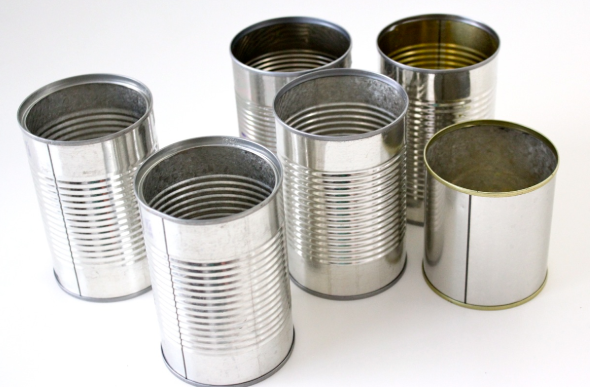Steel Mills

ArcelorMittal Discusses: Automotive, Calvert, Apparent Steel Consumption for 2015
Written by John Packard
February 15, 2015
During the ArcelorMittal earnings conference call which was conducted this past Friday, Lakshmi Mittal, CEO of AM told the analysts on the call, “At ArcelorMittal, we remain confident, that the steel will remain the material of choice for automotive. We are the leader in providing light weighting products and solutions for our automotive customer and believe these offerings are very attractive related to other materials.”
This was part of his discussion about how the ArcelorMittal Nippon Sumitomo joint venture mill in Calvert, Alabama was faring with their new slab supply coming from Tubarao in Mexico and Indiana Harbor in the United States. He also reported Calvert as being qualified on 157 different automotive parts and they have 20 more new qualifications that they are working on for 2015.
Later in the Question & Answer portion of the conference call Mittal spoke to what they believe will happen regarding automotive and the Calvert operation, “Now I think, if this takes time to get qualified for parts and it requires us to bid on new parts that are emerging. So this is something that takes time. I think we would look to certainly 2016. As we already saw some good improvement in our automotive shipments out of Calvert in 2014, I think as the Teekay – Riek [TK as in ThyssenKrupp] had announced the sale of that asset basis with all of that work more or less start.
![]() “I think we’ll see a significant increases next year and even into 2017, before we say we’ve really kind of fully got into the loading from the automotive sector, that we want to have in that business. We expect it to be quicker on the energy markets, particularly line pipe and so on, depending on what happens in with energy prices and that activity in that segment. But that’s another area where we need to go through some qualifications process. So given the softness in the market because of the inventory adjustment right now and given that we don’t have the contract business that we’re aspiring to have and that we will have it covered, that does make it a bit challenging in the current environment.
“I think we’ll see a significant increases next year and even into 2017, before we say we’ve really kind of fully got into the loading from the automotive sector, that we want to have in that business. We expect it to be quicker on the energy markets, particularly line pipe and so on, depending on what happens in with energy prices and that activity in that segment. But that’s another area where we need to go through some qualifications process. So given the softness in the market because of the inventory adjustment right now and given that we don’t have the contract business that we’re aspiring to have and that we will have it covered, that does make it a bit challenging in the current environment.
“Looking forward, I mentioned then the inventory adjustment, I think this is something we just have to work our way through. Again we think the underlying demand, the real demand in the U.S., continues to be strong. So sometime in the first half of the year we’d expect that inventory adjustment to be behind us and then we’ll see that underlying demand come through.
“I think as I mentioned we do have significant reductions in some of our input prices, again it takes a little time to flow through the income statement, because of the way we account for it the weighted average costing. Finally, I think there was a related question about the iron ore and again I would just repeat that we have a couple contracts with and it’s really with Cliffs. They are so much complex but by far the most significant one, does have variability built into it, not related to the iron ore price but the other drivers that I would say also help provide some relief on that front as well.”
At the moment all blast furnaces are in operation in the United States and Canada. They do have plans to take down the #7 blast furnace at Indiana Harbor later this year. However, this is not a full reline and should not be that disruptive to their production capabilities.
He spoke to the maintenance planned on #7 during the Q & A portion of the call in response to a question from Cowen & Company analyst Tony Rizzuto, “We do have a scheduled rebuild if you will not a full-fledge re-line, but significant work on one of the furnaces at Indiana Harbor that’s had been scheduled now ready for a couple of years for some time this July. Otherwise, there is no particularly dramatic maintenance outages or upgrades that are planned in the traditional operations in the U.S. Obviously, you are always doing that kind of work and you can always try to time that as appropriate, based on the market conditions and move some of those outages around, so we’d continue to do that. The only major work is again this summer on one of the smaller glass furnaces actually at Indiana Harbor.”
Mr. Mittal does not expect there to be any growth in the apparent steel consumption for the United States during 2015. “…due to the impact of restocking in 2014 [should be 2015], I would not expect further apparent demand growth in 2015. Rather I expect it to stabilize at what is a high level similar to [where] we were in 2007.”
Mittal believes it will be the inventory overhang in the United States, and not new imports, which will impact market pricing here. In response to a question from Mike Shillaker the AM CEO said, “So I think just to reinforce what Aditya said we have a situation where we have excess inventory to some degree driven by the surge in imports, but the buildup time is long as well. I think the most recent statistics for the service center segment is about 2.7 month on hand the let’s say normal or stable level should be 2.3. So that’s not a dramatic over supply or dramatically excess inventory, but we’re in a process particularly given the imports flow still coming in, working through that. So the underlying demand we think is positive, as this inventory overhang gets true then we think that underlying demand should take over and drive some recovery in that market.”
During the Q & A session he spoke to this subject again, “So I will start with NAFTA, again I think you’re right, we have to get through this period if you will, but I would point out again we have a very rich customer mix and product mix. I mean we have a lot of contract business, a lot of automotive business, et cetera. So we’re certainly affected by the spot market, but it’s not our bread and butter there.
“In terms of production cuts, we are in this kind of environment where the orders are – entry is slow because of the people working through the inventory. It makes no sense to pump – try to pump volume into that environment. So we are in fact metering some of our blast furnaces, that’s the approach we’re taking. I think that will have a material effect and the volume levels and maybe even comparable to banking a furnace, but the approach is more to meter the ones that we’re – that were operating to run them at a somewhat slower rate.
“So we’re responding I’d say in aggregate or in terms of the effect, similarly to other producers in North America, but again more through running the existing assets a bit slower we think that’s a bit more efficient given that we don’t expect this inventory adjustment to go on and on and on if that’s a more efficient way to be able to come back when the market requires it.”
He spoke during the Q & A session about pricing in North America, ““The one point I would say on the market in U.S., we – again we recognized that a lot of the input prices are coming down, adjusting as you described, okay, that inevitably is going to have some effect on the finished product prices. But we’re also in a pretty significant now inventory related adjustments, we’ve seen these many cycles several times in the past. And I think it’s a little bit risky to extrapolate from and that adjustment perhaps as to what the more stable environment is going to be. So again we have to get through this, I think the wild card is if you continue to have the sustained imports, but I think even there is some response there, in the sense, that I think if that continues then the pressure in Washington will go up quite substantially. But once we’re through this inventory adjustment, then I think we’ll be in a more stable environmentagain the underlying demand continues to be relatively healthy in North America. So I wouldn’t extrapolate too much from the environment we’re in right now, which is really a kind of an adjustment process and mini down cycle inventory adjustments that we’ve seen couple of times in the past with similar kind of impacts and looking like a buyer strike if you will in the stock market.”
When asked about a possible trade action on foreign imports into the United States Mittal responded, “I think what is fair to say at this point in time because some of these things are confidential as that our guidance, we’re not assuming any fair trade actions.”
Quotes were taken directly from Bloomberg earnings call transcript of the ArcelorMittal conference call held on Friday, February 13, 2015.

John Packard
Read more from John PackardLatest in Steel Mills

Former JSW Steel USA CEO to join AM/NS Calvert
Steel industry veteran Mark Bush announced he will be joining AM/NS Calvert as area manager steelmaking.

U.S. Steel taking 45-day outage on Gary Works’ BF4
U.S. Steel’s No. 8 blast furnace (BF8) at its Gary Works in northwest Indiana is undergoing a 45-day maintenance outage that started on April 4.

USS shareholders vote in favor of Nippon merger
U.S. Steel Corp.’s impending sale to Japan’s Nippon Steel Corp. (NSC) has cleared one hurdle: USS stockholders voted overwhelmingly in favor of the nearly $15 billion merger.

SMU survey: Sheet lead times contract, plate pushes out
The market appears to be taking a pause after the heavy buying that occurred in March.

USW claims Nippon prioritizing Japanese ops in US tin mill trade case
The United Steelworkers (USW) union is calling out Nippon Steel for already prioritizing its Japanese operations at the expense of American workers despite forging ahead with its proposed plan to purchase U.S. Steel.
